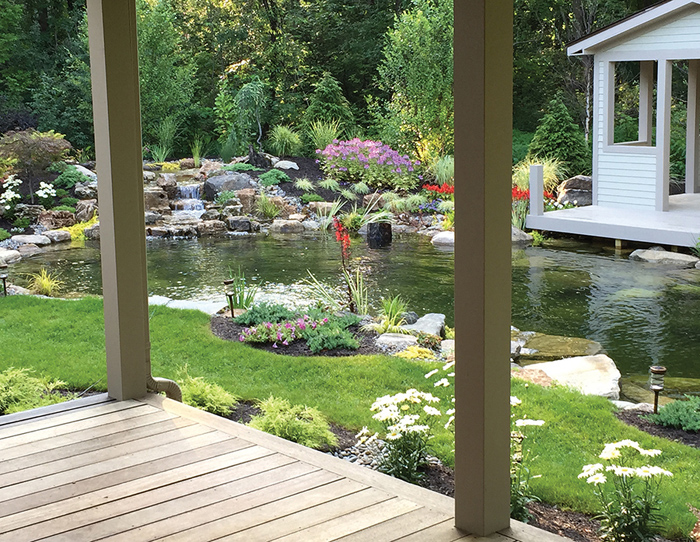
Recreation ponds are a sweet spot for us. Over the years, we have had much success designing and installing many of them. Recreation ponds can require a bit more planning compared to a traditional koi pond, but the profits are well worth the effort.
We have a process we follow to make sure our clients understand exactly what a recreation pond is and what to expect. It is important to prequalify the customer, as the price tag of a recreation pond is much different from that of an average koi pond. This initial conversation always starts with a question like, “What made you decide on a recreation pond?”
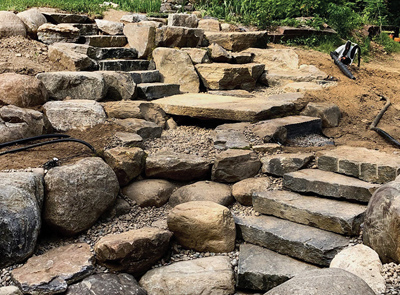
Most of the time, they had fallen in love with the concept after watching footage on YouTube. After all, how could you not? Other questions I like to ask include: How do you see your family using the pond? Do you like the outdoors — camping, going to lakes and hiking? The answers to these questions will allow you to assess their comfort level with swimming in a natural body of water. If it sounds like they want a chemical-based system, a recreation pond is not for them. After all, this is a natural ecosystem with wildlife!
Clients who are interested in recreation ponds need to fully understand what they are getting into. Set their expectations in the prequalification stage. It is important to discuss the nature of the ecosystem and the associated maintenance. Personally, I love swimming in a natural setting. But if someone in the client’s household wouldn’t even wade in a lake, chances are they’ll end up unhappy, because recreation ponds usually involve swimming with frogs and other creatures that make up an aquatic ecosystem. Of course, when your recreation pond is new and young, it will go through a balancing act like any other ecosystem pond. As we all know, ponds get better with age.
Negotiate Pricing
For the next step, let’s talk budget. Recreation ponds are an investment and cost more than a liner swimming pool. The cost of a recreation pond is more in line with that of a gunite pool, but it still tends to be higher. Budget discussions begin with explaining the “starting at” investment involved with recreation ponds.
Once clients have a realistic number in mind and are willing to go to the next step, we discuss a site visit. We charge for on-site consultations and planning. After all, if they aren’t willing to pay $500 to $2,000 for a site visit, then it’s unlikely that they will invest in a recreation pond.If we get pushback with a consultation, I invite them to come and see our personal recreation pond in real time and even bring their kids and family. This gives them a deeper understanding and helps them decide one way or the other if a recreation pond is for them.
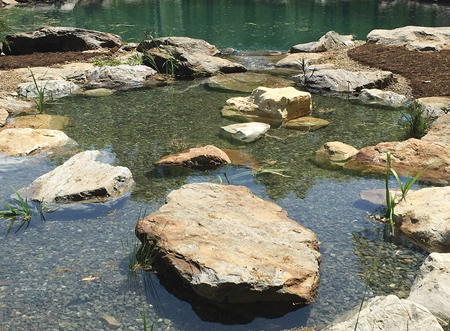
Everyone thinks a recreation pond needs to be huge. A good entry-level recreation pond doesn’t have to break the bank. A sweet spot for us has been 25 by 18 feet, and either 4 or 6 feet deep. Pricing for a feature this size, including a wetland, skim cove and pond with no additional stream or waterfall area, starts at $67,000. For us, a three-man crew can build this feature in about seven working days.
I like drawing basic pond plans, because it seems to clear up any doubt surrounding what the client is getting into. For us, it always seems to expand into sitting areas, fire pits and a whole outdoor living space. Adding these elements to make the recreation pond interactive always helps to seal the deal.
Ensure Best Practices
We as designers are always thinking about aesthetics, but we also need to think about durability and safety. During the planning process, it’s important to talk with the client about how they want to use their pond. Taking these elements into consideration transfers over to how are we build the pond so that it lasts them a lifetime. For instance, if someone likes to climb all over the boulders, they need to be sturdy. If we are building a plunge area, I like to use slab rocks that stay tight to the bank but are solid and won’t move. If people are going to be jumping in the pond, you wouldn’t want a boulder sticking out too far.
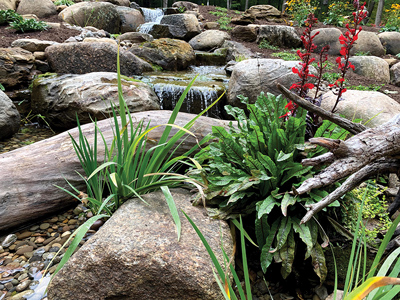
Steps are something we always include for the more mature client. We want all ages to be able to enjoy it. Beach areas are fun for everyone, especially young children. Our clients with recreation pond tend to have a love for the outdoors. They do not want to swim in chemical-based water and want their families to experience nature. Depths of these ponds range from 4 to 8 feet, which means we want to get that water on the bottom moving. We generally jet the deep areas and sometimes add aeration.
When designing a recreation pond, it’s key to make sure your wetland is a minimum of 30% of the pond surface area. A 25-by-18 pond is 450 square feet, making your ideal wetland approximately 135 square feet. Remember, it’s best to always round up. Calculating filtration based on this principle, we have been able to achieve exceptional water quality. Adding aquatic plants to the wetland always helps reduce the nutrient load, especially if the recreation pond includes fish. Do not skimp on your wetland! It’s never worth it.
Add Finishing Touches
Skim coves are a must to ease the level of maintenance on the larger ponds. The client needs to enjoy the pond and not have to tend to it every single day. This also allows for a larger pump suction area. We always install external pumps when people plan on swimming in the pond.
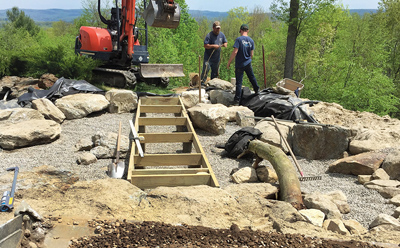
Edge treatments are also a huge part of making any water feature look natural. Outcroppings are so important, but do not overdo it. Leave gaps where you can plant terrestrial plants. Aquatic plants are a great way to soften edges from inside the pond.
We no longer do a lot of landscaping, but I like to plant around our ponds, because we have a better idea of how we want it to look a couple of years down the road. I always include an underwater light package in our recreation ponds, which can extend a clients’ enjoyment beyond work hours and into the evening.
Recreation ponds have become a large part of our success over the last five years. There are many new clients out there who are ready and waiting to enjoy recreation ponds. Prequalifying clients, setting expectations and carefully planning and building the pond can help you realize your own success with recreation ponds as well.



I’m curious, what sort of lights do you use for a pond intended for swimming? Trying to figure that one out.